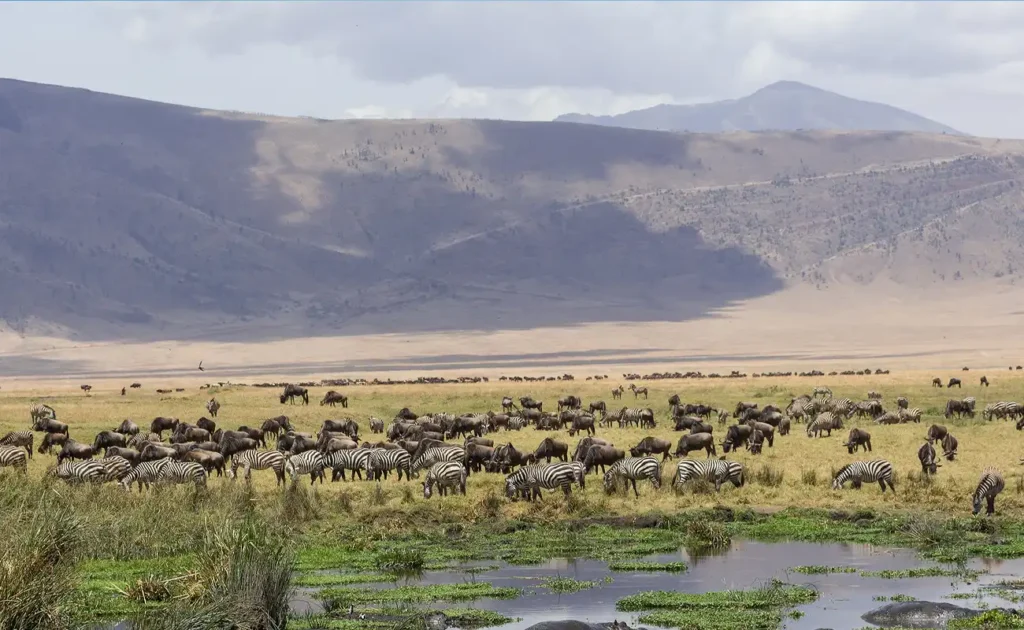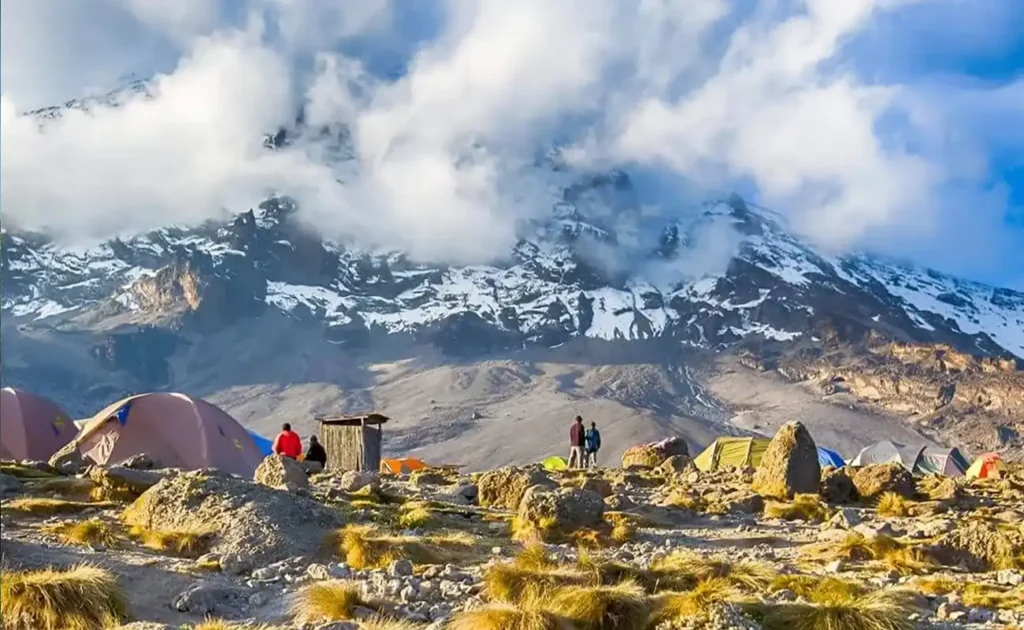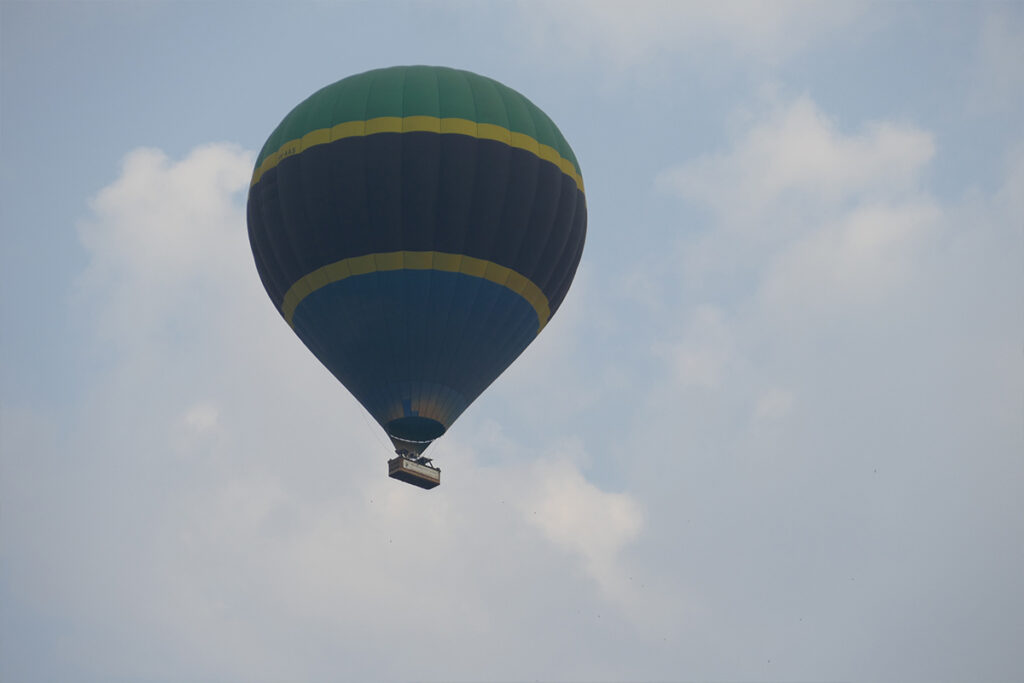In the heart of Africa stands the mighty Kilimanjaro, a daunting peak known to defeat more than half of its challengers each year—an intriguing reality that beckons an in-depth exploration of the strategies that lead to a successful summit. This statistic raises a vital question: how does one navigate the thin line between triumph and retreat? The answer lies, intriguingly, in both physical preparedness and a deep respect for the mountain’s demands.
Tracing back through history, climbers have long embraced the mantra, “pole pole,” or “slowly, slowly,” which is crucial for acclimatization and success on Kilimanjaro. Surprisingly, only about 65% of those attempting the climb succeed, often due to inadequate preparation and altitude sickness. Therefore, understanding the importance of a gradual ascent, proper gear, and mental resilience not only elevates the spirits but significantly enhances the probability of conquering Africa’s tallest peak.

How do I Maximize my Chances of Reaching the Summit of Kilimanjaro
Successfully reaching the top of Mount Kilimanjaro requires more than just determination. It’s about preparing properly for the challenges ahead. Begin with a physical training plan that increases your strength and endurance. Regular hikes with a pack will help simulate the conditions you’ll face. Additionally, focus on cardiovascular exercises, like running or cycling, to boost your stamina.
Choosing the right gear is equally essential for a successful ascent. Elevate your experience by investing in quality hiking boots for optimal grip. Layered clothing ensures you stay warm in varying weather. In your backpack, pack essential items like a water bottle, snacks, a hat, and sunscreen. These items will keep you comfortable and energized during the climb.
While on the mountain, the mantra “pole pole” or “slowly, slowly” becomes vital. Ascending too quickly can lead to altitude sickness. This method ensures your body has time to adjust to changes in altitude. Furthermore, most guides recommend drinking plenty of water. Balancing your hydration and pacing is key to success.
Engaging a knowledgeable guide service enhances your journey. Professional guides provide invaluable insights into the terrain. Their support and experience can be vital during tricky parts of the climb. They also help monitor your health, watching for signs of altitude sickness. With the guidance of experts, your climb becomes safer and more enjoyable.
Comprehensive Preparation for Kilimanjaro Climb
Preparation for Kilimanjaro begins well before setting foot on the trail. Start your fitness regime months ahead to build stamina and strength. Hiking, jogging, and strength training should be part of your weekly routine. Aim for both endurance and flexibility to handle different terrains and elevations. Consistency in your workout routine is key to building the required fitness level.
Understanding the route options and choosing the right one is crucial. Each route offers different scenery, difficulty levels, and duration. Some popular routes are the Marangu, Machame, and Lemosho routes. Most climbers opt for longer routes to allow better acclimatization. Research and select a route that matches your fitness level and experience.
Gathering proper gear is essential for a successful climb. Make sure you have high-quality hiking boots, a durable backpack, and suitable clothing for varying temperatures. Key items to include are a sleeping bag, trekking poles, and hydration systems. Here’s a basic checklist to follow:
- Hiking boots
- Backpack
- Layered clothing
- Sleeping bag
- Trekking poles
- Hydration system
Lastly, mental preparation is just as important as physical readiness. Familiarize yourself with potential challenges, such as altitude sickness and changing weather conditions. Practice mindful breathing techniques to manage stress levels during the climb. Remember to stay positive, as mental endurance is pivotal. Knowing what to expect can help you stay focused and calm during the journey.
The Importance of Acclimatization for the Kilimanjaro Climb
Acclimatization plays a crucial role in climbing Kilimanjaro. As you ascend, air pressure decreases, making it harder to breathe. Proper acclimatization helps your body adjust to these changes. Without it, climbers risk altitude sickness. This is why pacing yourself during the ascent is critical.
The “pole pole” approach is vital for successful acclimatization. This Swahili phrase means “slowly, slowly”, guiding climbers to take their time. By moving slowly, your body has more time to adapt to the thinning air. It reduces the risk of experiencing headaches, nausea, and fatigue. This slow pace can determine if you reach the summit or have to turn back.
Beyond pacing, proper hydration aids in acclimatization. Drinking at least 3-4 liters of water daily can make a difference. Staying hydrated helps your body function well at high altitudes. It flushes out toxins and aids in reducing altitude sickness symptoms. Prioritize water intake as part of your routine on the mountain.
Choosing routes that offer extra days for climbing can also enhance acclimatization. Longer routes mean more time to adjust to the altitude. Routes like Lemosho and Machame provide better acclimatization opportunities. Consider these options if it’s your first ascent. More time on the mountain often means greater success in reaching the top.
Crucial Factors to Consider During the Kilimanjaro Ascend
Understanding the terrain of Kilimanjaro is essential for a successful climb. The mountain features diverse ecosystems, from lush rainforests to arid deserts. Take note of how each zone’s conditions change. Each layer demands specific gear and clothing adjustments. Being prepared for each shift can significantly improve your experience.
Weather plays a major role in the safety and enjoyment of the climb. Kilimanjaro’s weather can be unpredictable with sudden changes. It’s essential to check forecasts and remain adaptable. Pack both warm layers and waterproof gear. This preparation will keep you comfortable and safe from unexpected weather shifts.
Optimal nutrition is vital during the climb to maintain your energy levels. Include balanced meals and high-energy snacks like nuts and dried fruit. Keeping your body fueled aids physical performance and boosts morale. Daily calorie intake may need to increase due to the exertion. Consider meals that are easy to digest for best results.
Monitoring health is paramount for minimizing risks during the climb. Recognize symptoms of altitude sickness early, such as dizziness and shortness of breath. Guides are trained to assist with these complications. If symptoms persist, descent might become necessary. Always prioritize health over the desire to push forward.
Group dynamics can also impact your Kilimanjaro experience. Climbing with a supportive group or experienced guide fosters safety. Communicate effectively to ensure everyone’s needs are met. Team spirit can lift morale during challenging moments. Bonding with your group may form lasting memories along the journey.
Frequently Asked Questions
Embarking on a trek to the summit of Kilimanjaro is both exciting and challenging. Below are some frequently asked questions to help you prepare and succeed in reaching the iconic mountain’s peak.
1. What is the best time of year to climb Kilimanjaro?
The best time to climb Kilimanjaro depends on the weather, which can greatly affect your ascent. The two main climbing seasons are from June to October and December to February. During these months, the weather is typically drier and the skies clearer, providing a greater chance of success. However, it is important to prepare for abrupt weather changes and pack accordingly.
Climbing during the rainy seasons, mainly from March to May and November, can be more challenging due to wet and slippery conditions. Some may prefer these months to avoid crowds, although the weather poses additional risks. Overall, choosing the best time is a balance between your preferences and weather patterns.
2. How can altitude sickness be prevented while climbing Kilimanjaro?
Altitude sickness is a common concern for climbers on Kilimanjaro. Preventing it involves a slow ascent to allow time for acclimatization, which is crucial in adapting to high altitudes. Drinking plenty of water and getting enough rest also supports your body’s acclimatization process, contributing to a healthier climb.
Listening to your body is essential, as symptoms may vary. If you experience severe symptoms like headaches or dizziness, descent to a lower altitude may be necessary. Some climbers consider taking medication like acetazolamide, but consulting with a healthcare professional before the trip is advised.
3. What equipment is necessary for a successful Kilimanjaro climb?
Proper equipment is essential for a safe and comfortable ascent. Packing layered clothing is key, as temperatures vary significantly from the base to the summit. High-quality hiking boots, waterproof gear, and a durable backpack will aid your journey, keeping you prepared for changing conditions.
Don’t forget essentials such as a good sleeping bag, trekking poles, and sun protection. A headlamp and first aid kit should also be included in your gear list. Ensuring your equipment is suited to the conditions will make your climb more enjoyable and successful.
4. Why should I consider hiring a professional guide for the climb?
Hiring a professional guide can significantly enhance your Kilimanjaro experience. Guides provide valuable knowledge about the terrain and culture, ensuring safe navigation through the mountain’s various zones. Their expertise can be crucial in challenging sections, making your climb smoother and more informative.
Moreover, guides are trained to monitor climbers’ health and recognize symptoms of altitude sickness. They can make critical decisions if any issues arise, providing peace of mind and support. Overall, having an experienced guide increases the likelihood of reaching the summit successfully.
5. What physical preparation is needed for climbing Kilimanjaro?
Preparing physically for the Kilimanjaro climb involves building strength, endurance, and flexibility. Regular cardiovascular exercises like running, cycling, and hiking can improve your fitness level. These activities simulate the physical exertion you’ll encounter on the mountain, building the stamina required for a successful ascent.
Incorporating strength training into your routine can be beneficial. Focus on exercises that target key muscle groups, especially those aiding in trekking. A well-rounded fitness plan, started months before the climb, helps ensure your body is ready for the challenge ahead.
In Conclusion
Climbing Kilimanjaro is a remarkable journey that demands thorough preparation and tenacity. By understanding the importance of acclimatization and using proper equipment, climbers can enhance their chances of success. Engaging experienced guides and adhering to slow ascent strategies are crucial steps. Together, these strategies foster a safer and more rewarding climbing experience.
The allure of Kilimanjaro lies not only in reaching its summit but also in the adventure and growth encountered along the way. Armed with physical readiness, mental resilience, and strategic planning, climbers are well-equipped to tackle this awe-inspiring mountain. The memories forged and challenges overcome here extend beyond the climb itself, enriching both personal and professional endeavors.



